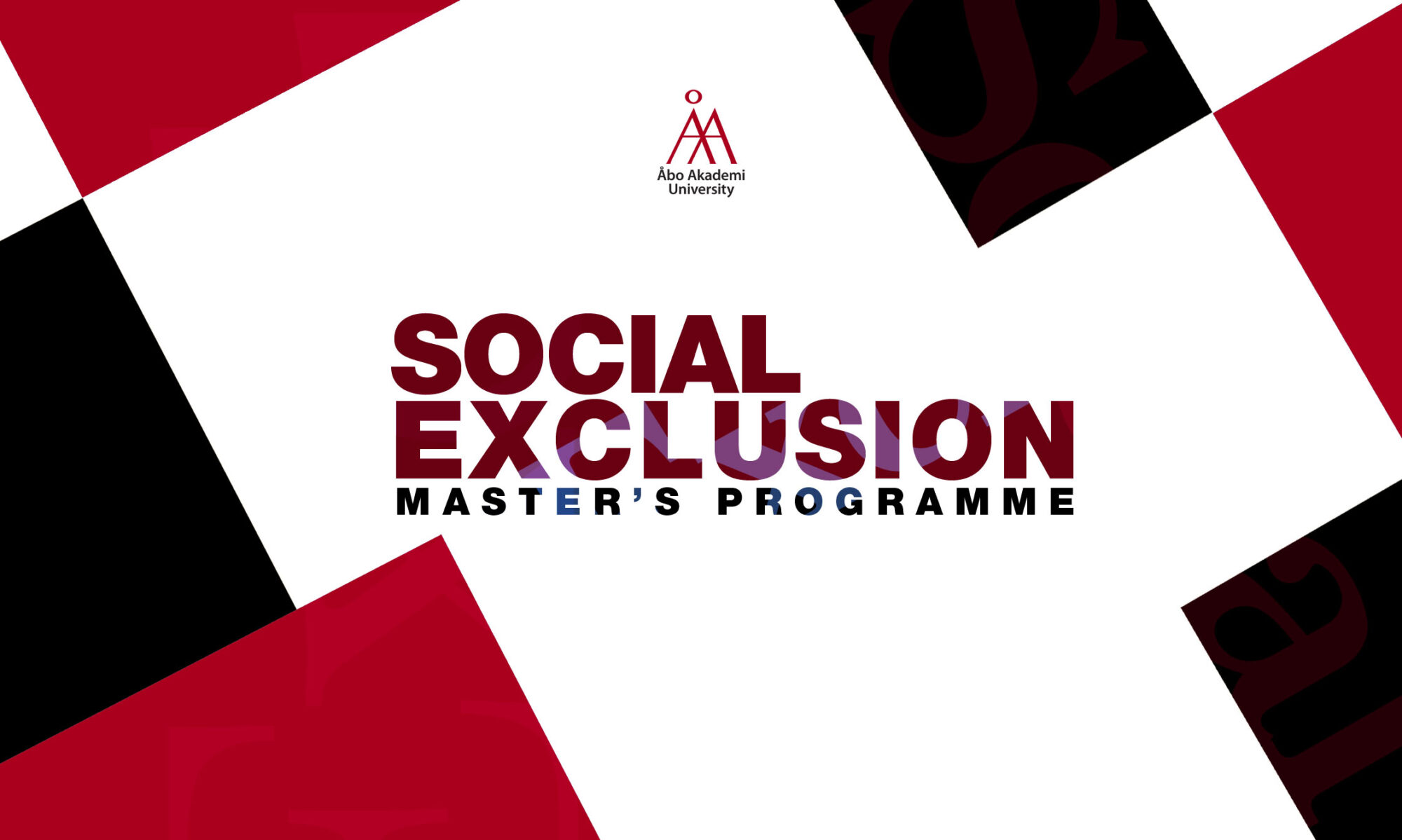Written by Elna-Annina Kanerva
In this blog post, I will discuss the social exclusion in Helsinki, Finland and precisely how the eastern parts of the city are becoming more and more concentrated with inhabitants of foreign backgrounds while so-called native Finns are moving elsewhere. The blog post will focus on areas such as Kontula, Kannelmäki, Vuosaari, Kallahti and Myllypuro since approximately 29.1% of all inhabitants in Helsinki with a foreign background live in these areas.[1]
Before diving deeper into this issue, I feel it’s essential to establish my role and view on this topic. I have never lived in the eastern parts of Helsinki myself; however, most people who have lived or live in Helsinki and I are aware of its reputation as the “bad part” of the city. My mother, who spent her childhood living there, has told me about changes the area has gone through in the last 30 years; the once so peaceful and calm neighbourhood she grew up in has become a place where used drug needles are found. A friend, who has spent a lot of his childhood in these areas, has told me how immigrants from the same regions of origin tend to live in the same neighbourhoods and thereby create communities for themselves. These stories and experiences have led to me choosing to write and research this topic. I want to know why this happens. I want to see why these small communities are formed and why they have a terrible reputation. I want to know why my mom has found used drug needles in the front yard of her childhood home.
I also want to point out that I’m looking at a significant and general picture of moving practices and patterns within the city. Many parts of eastern Helsinki are very beautiful, with long, sandy beaches and fancy houses overlooking the sea; it’s not an undesirable area. There are indeed people who want to live there and feel safe. My goal, however, is to figure out why the big picture looks like it does.
What makes this issue essential is the development that’s been happening in this area for the last circa 30 years. The continuance of the development of clustering could lead to an even more segregated area from which it’s hard for people living in to separate themselves and integrate into Finnish society. I mostly see the continuance of this development as an obstacle in the integration process, which I will explain further down.
To better understand what this topic focuses on, it’s necessary to map what the situation in Helsinki looks like now. Some statistics:
At the end of 2020, approximately 111,000 people with a foreign background lived in Helsinki. The most common countries of origin are Russia (18,400 people), Estonia (11,800 people), Somalia (12,000 people), Iraq (6,500 people) and China (4,000 people). Immigration is a fairly new phenomenon in Helsinki: in 2020, only half of its immigrants had lived there for over ten years.[2]
As you can see, there is a wide variety of different national backgrounds living in Helsinki. It’s important to note that the word “immigrant” in this blog post means anyone of a foreign background living in Finland (who directly doesn’t resemble a so-called native Finn), meaning a person whose ethnicity, demeanour or native language noticeably isn’t Finnish. Many of these people see themselves as different from the rest of society, and that’s where the issue of social exclusion comes in.
Since social exclusion is a very broad term that can be defined and understood in numerous ways, we need to establish a working definition for this case. In this situation, we will be looking at social exclusion as a phenomenon restricted to some geographical regions and as “a state equivalent to relative deprivation and as processes of socially determined impediments to access resources, social goods or institutions.”[3]
Research shows that those with a foreign background living in these segregated suburbs tend to feel bound or even restricted to them. While there are many reasons for this, one of the major ones is lack of belongingness and not having connections elsewhere, which ultimately results from other people or institutions practising exclusionary behaviour towards these individuals. Such practices tend to, in many cases, be subconscious or unintentional while still having a significant effect on those who are vulnerable.[4]
One factor contributing to this kind of residential segregation is the council housing policy in Helsinki. Helsinki offers housing in several council houses in its suburbs. Council dwellings are an essential form of housing for refugees, low-income immigrant families, and Finns. Since these families don’t have a choice in which location they end up living in (due to monetary reasons), they tend to be allocated in suburbs so-called natives do not want to live. Eastern Helsinki is an excellent example of such an area. This has led to a continuance of many council houses in eastern Helsinki being inhabited by immigrant families. Meanwhile, those with a Finnish background are starting to move elsewhere.
While there are several reasons for forming these “clusters”, the main factor seems to be a feeling of not belonging. Those of immigrant background living in these clustered areas certainly feel like they belong in them better than anywhere else in the city; living close to someone of the same experience creates a feeling of safety and support, which is very understandable. Immigrants have said that many are afraid of facing – and do face – racism and harassment outside of these areas, which naturally also leads to them not wanting to leave their “safety nets”.
Then why is it that these people are afraid of facing racism and harassment in the so-called outside world?
We cannot ignore, of course, the exclusionary behaviour they have had to face outside these “clusters”. However, this conception of Finns being racist and xenophobic may have been enforced by the marginalised group of Finns these people live near and therefore interact with. As stated above, eastern Helsinki isn’t a very wanted area among housing seekers, and those who have no other choice tend to end up in its suburbs – which also applies to Finns. This has led to a situation where the native population living in these same housing buildings with the immigrant families typically represent a low-socioeconomic status. Social workers in Helsinki state,
“[…] In many housing estates, where our customers [Somali families] live, there aren’t many normal Finnish families: working, nice kids, mum and dad. There are multi-problem Finnish families, whose aggressions and bad feelings are directed at immigrant families–”.
These kinds of experiences further reinforce the negative conception of the native population. It is also understandable that these experiences further reinforce peoples’ desire to stay within their “safety nets” and not move away from these clusters for fear of facing harassment.[5]
According to Somali interviewees, many Finnish Somalis depend on their social networks and communities to find housing and new housing locations. Since information on living opportunities and housing spreads through relatives and friends, it becomes difficult to break free from these restricted communities and improve one’s housing situation. Previous studies have shown a similar problem among minority ethnic groups in other countries. It seems to be a problematic, persisting pattern that reinforces itself. The result is that people are stuck in these circles even when they don’t want to, which makes the integration process much more difficult.[6] The next blog post will be focusing on what can be done to end this vicious circle, which seems to be standing in the way of people feeling like they truly belong to society.
———————————————————————————————–
[1] www.ulkomaalaistaustaisethelsingissa.fi
[2] www.ulkomaalaistaustaisethelsingissa.fi
[3] Article: Reconceiving Social Exclusion (Andrew M. Fisher)
[4] Article: Housing policy and the ethnic mix in Helsinki, Finland: perceptions of city officials and Somali immigrants (Hanna Dahlmann, Katja Vilkama)
[5] Article: Housing policy and the ethnic mix in Helsinki, Finland: perceptions of city officials and Somali immigrants (Hanna Dahlmann, Katja Vilkama)
[6] Article: Housing policy and the ethnic mix in Helsinki, Finland: perceptions of city officials and Somali immigrants (Hanna Dahlmann, Katja Vilkama)

